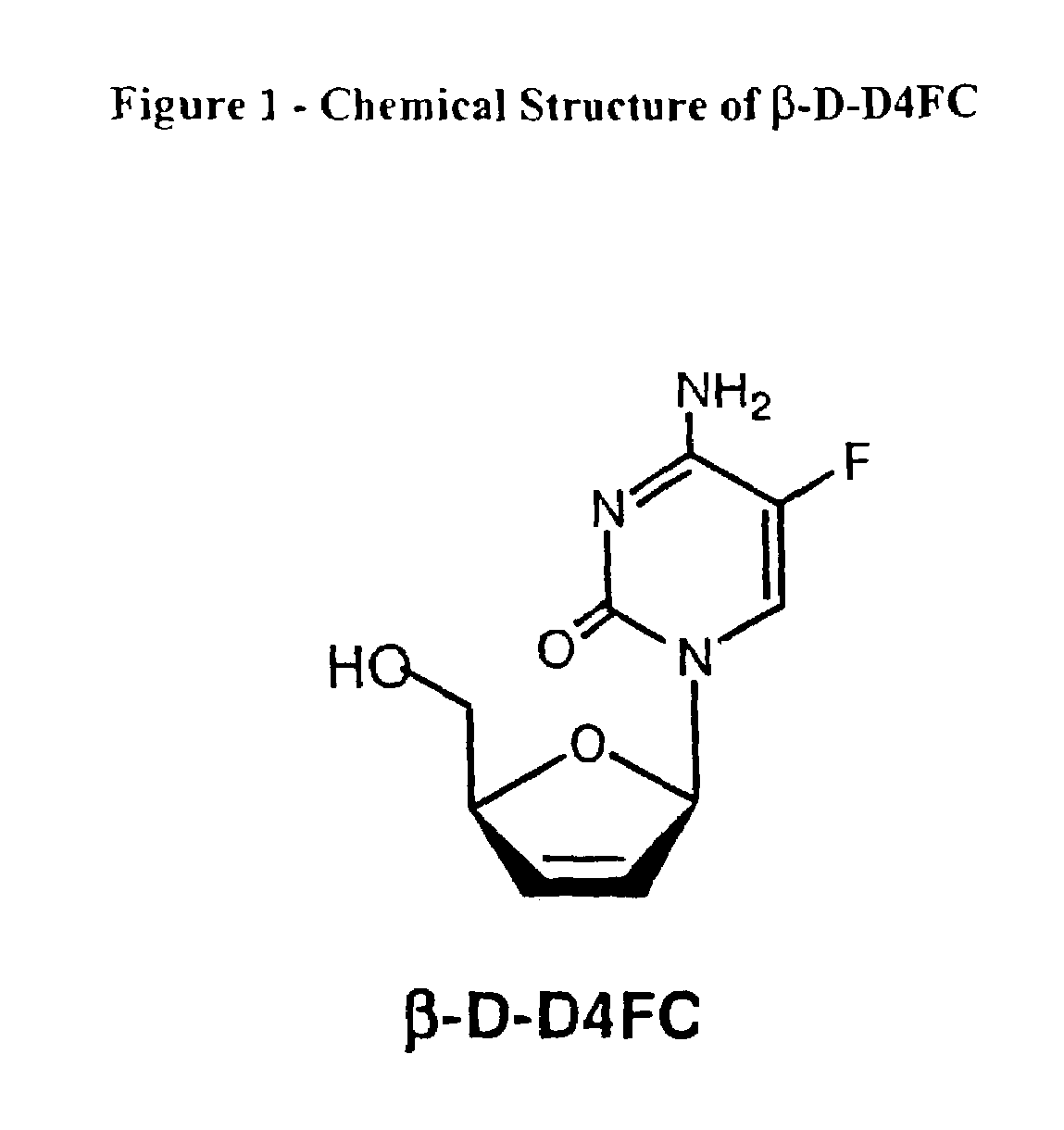HIV-1 mutations selected for by beta-2',3'-didehydro-2',3'-dideoxy-5-fluorocytidine
- Summary
- Abstract
- Description
- Claims
- Application Information
AI Technical Summary
Benefits of technology
Problems solved by technology
Method used
Image
Examples
Embodiment Construction
I. Definitions
[0028]As used herein, the term “resistant virus” refers to a virus that exhibits a three, and more typically, five or greater fold increase in EC50 compared to naive virus in a constant cell line, including, but not limited to peripherial blood mononuclear cells (PBMCs), or MT2 or MT4 cells.
[0029]The term D-D4FC is used interchangeably with the term β-D-D4FC below.
[0030]As used herein, the term “substantially pure” or “substantially in the form of one optical isomer” refers to a nucleoside composition that includes at least 95% to 98%, or more, preferably 99% to 100%, of a single enantiomer of that nucleoside. In a preferred embodiment, β-D-D4FC is administered in substantially pure form for any of the disclosed indications.
[0031]As used herein, the term “prodrug” refers to the 5′ and N4 acylated, alkylated, or phosphorylated (including mono, di, and triphosphate esters as well as stabilized phosphates and phospholipid ) derivatives of D-D4FC. In one embodiment, the ac...
PUM
| Property | Measurement | Unit |
|---|---|---|
| Temperature | aaaaa | aaaaa |
| Mass | aaaaa | aaaaa |
| Fraction | aaaaa | aaaaa |
Abstract
Description
Claims
Application Information
 Login to View More
Login to View More - R&D
- Intellectual Property
- Life Sciences
- Materials
- Tech Scout
- Unparalleled Data Quality
- Higher Quality Content
- 60% Fewer Hallucinations
Browse by: Latest US Patents, China's latest patents, Technical Efficacy Thesaurus, Application Domain, Technology Topic, Popular Technical Reports.
© 2025 PatSnap. All rights reserved.Legal|Privacy policy|Modern Slavery Act Transparency Statement|Sitemap|About US| Contact US: help@patsnap.com



